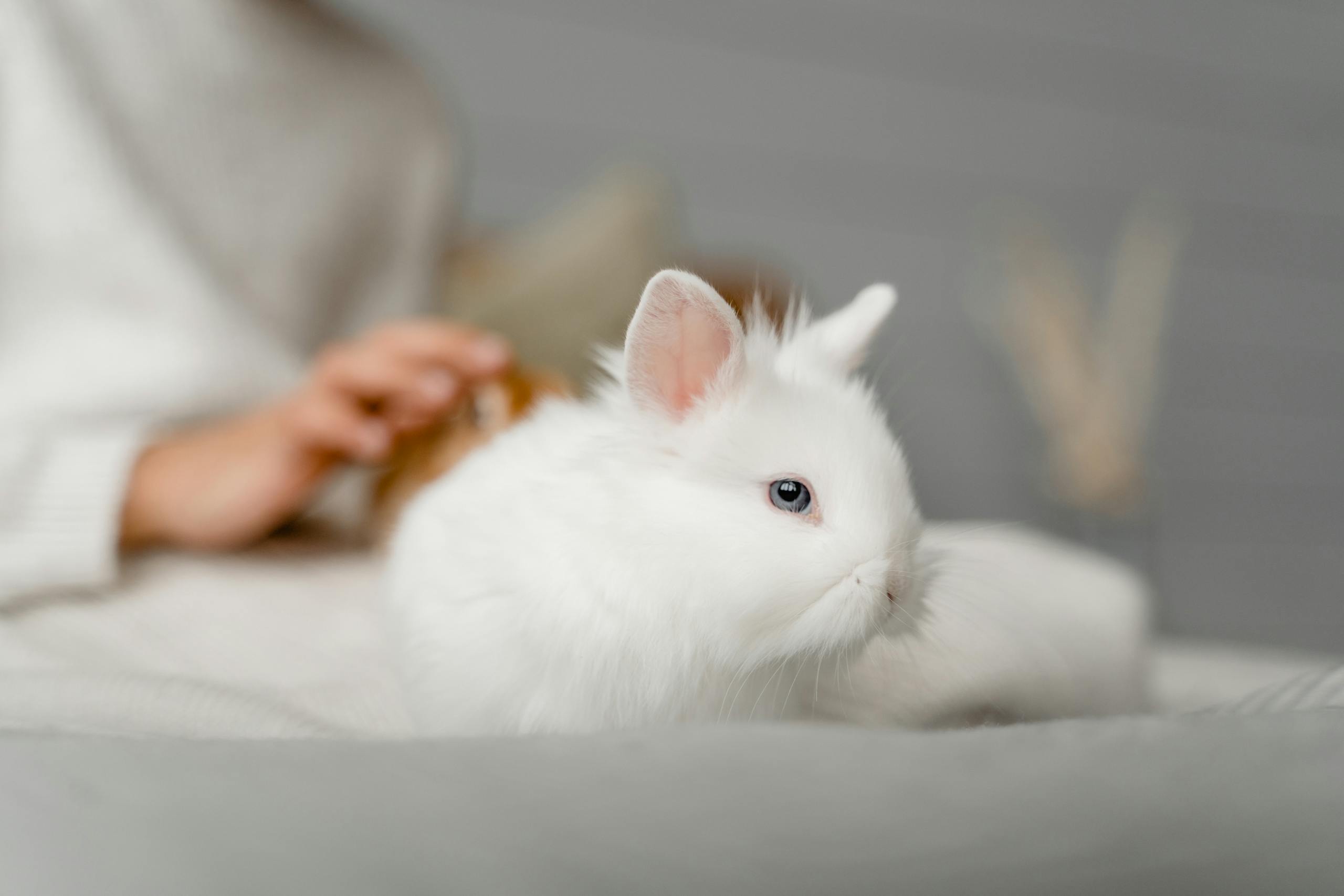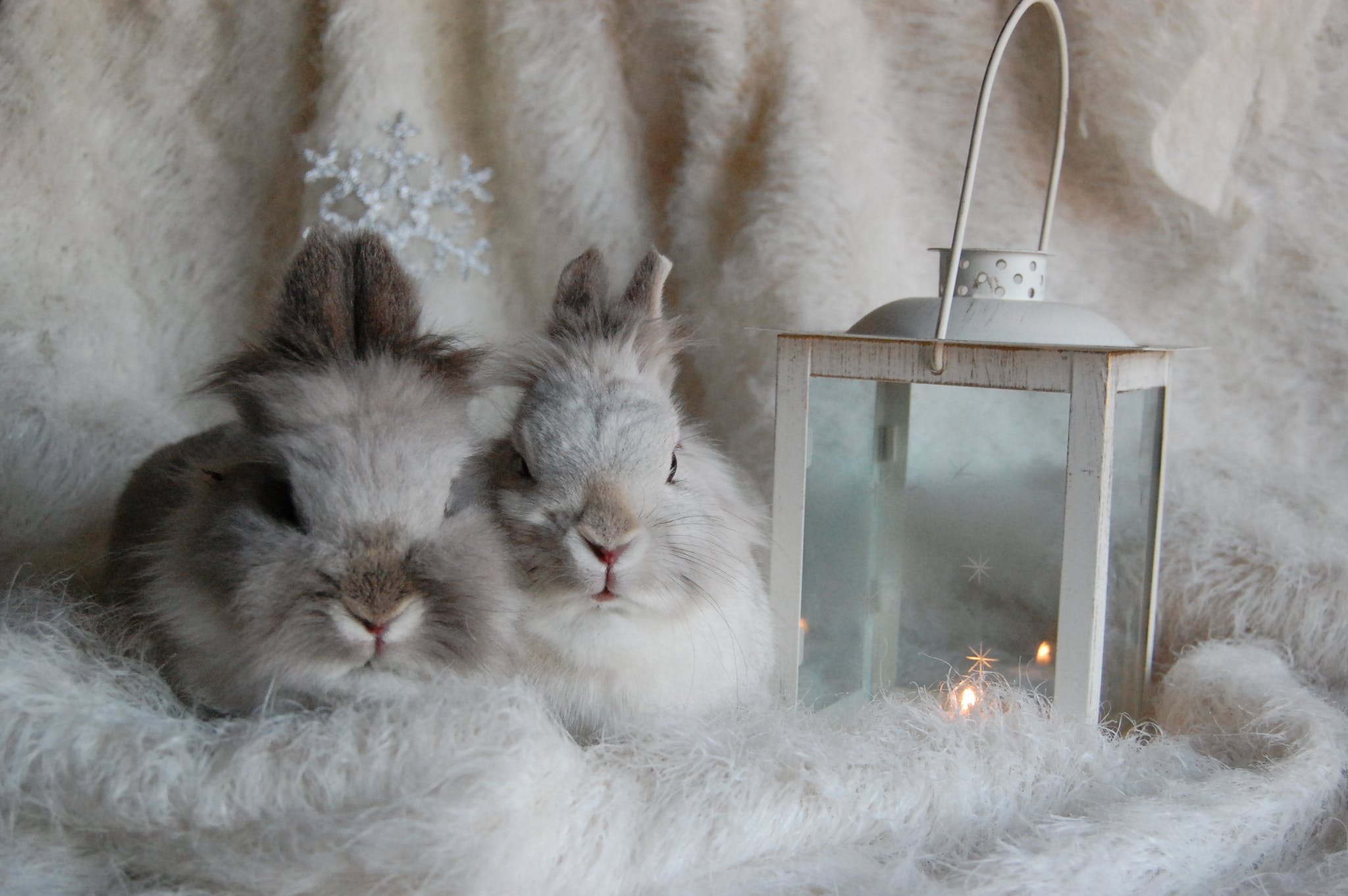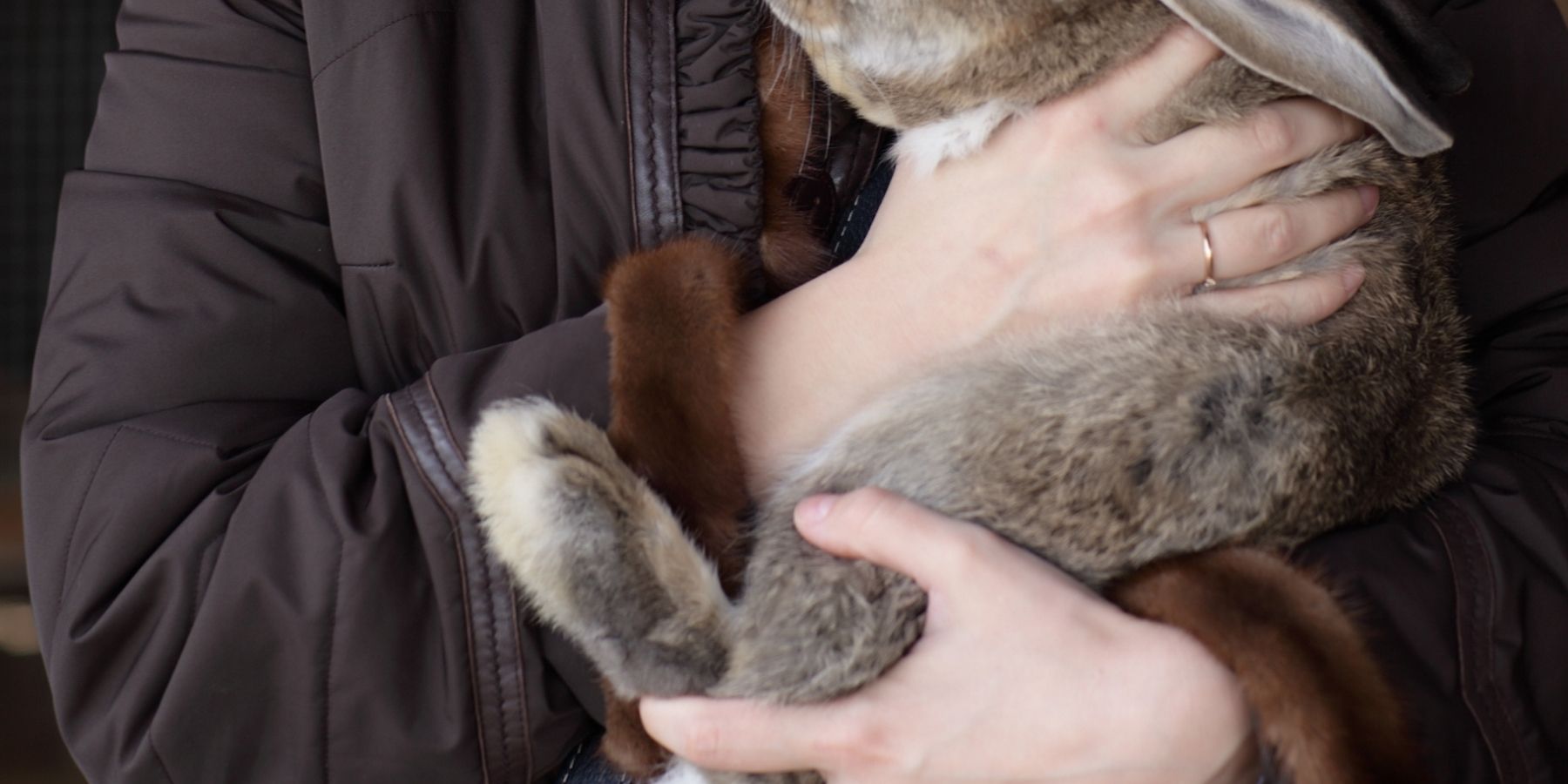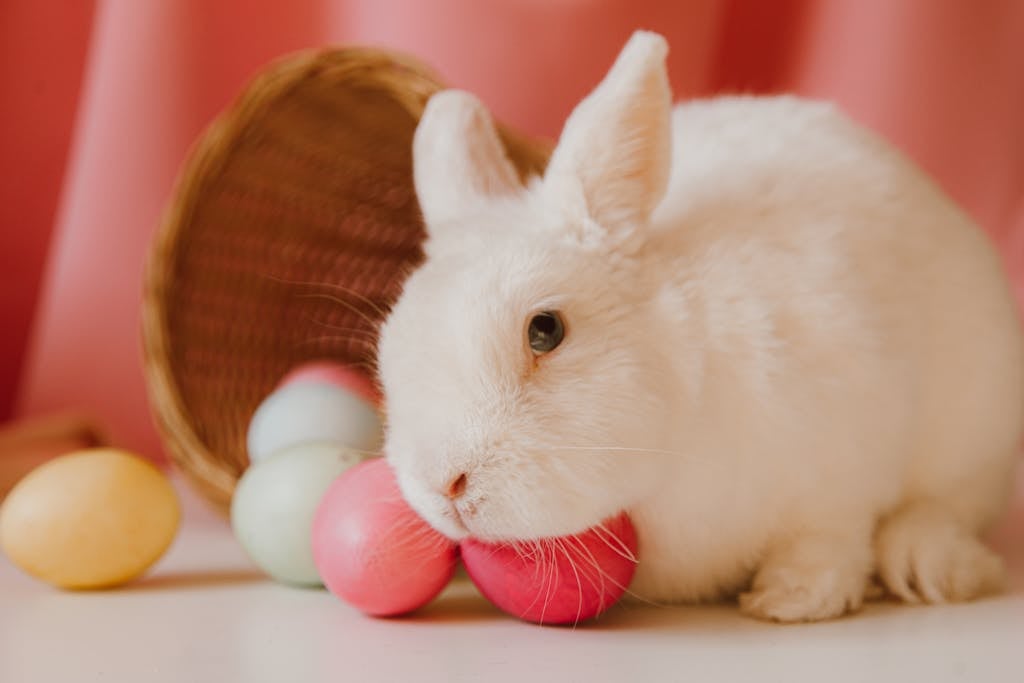Why Do Pet Rabbits Thump? Unraveling the Bunny Mystery
Have you ever wondered why your pet rabbit suddenly starts thumping its back legs? This curious behavior often puzzles rabbit owners. Thumping isn’t just random noise—it’s a vital form of communication in the rabbit world.
When rabbits thump, they’re usually sending a message of alarm or signaling that something in their environment has unsettled them. By understanding this natural instinct, you’ll learn to better interpret your pet’s needs and emotions.
What Does Thumping Mean?
Have you ever noticed your pet rabbit suddenly thumping its back legs on the ground? This behavior is more than just a cute quirk; it’s a significant form of communication for rabbits. Understanding why rabbits thump can help you connect with your furry friend and even keep them safe.

Photo by Tima Miroshnichenko
Communication Signals
Thumping is one way rabbits “talk” to each other. But what are they trying to say? Here are a few reasons why your rabbit might be sending you a thumping message:
- Warning of Danger: Just like an alarm system, a thump can alert others of nearby threats. It’s a rabbit’s way of saying, “Watch out!”
- Seeking Attention: Sometimes, a thump might just mean they want you to notice them. Maybe they want a snack or some playtime.
- Expressing Frustration: Ever seen a rabbit thump and hop away? It might be upset or annoyed. Perhaps it didn’t like being petted or held a certain way.
Understanding these signals can help you respond better to your rabbit’s needs. Just like how you can tell a friend’s tone of voice, you can learn to interpret your rabbit’s thumps.
Instinctual Behavior
Thumping isn’t just about communication; it’s deeply wired into a rabbit’s instincts. Think of it as their version of survival tactics honed over thousands of years in the wild.
- Sound and Vibration: Thumping makes a noise and creates ground vibrations. These help alert other rabbits without saying a word. It’s like sending an SOS through the ground!
- Fight or Flight: If a rabbit feels threatened, thumping may be its first line of defense. It’s the rabbit’s way of assessing whether to stay put or make a quick escape.
Even domesticated rabbits have these wild instincts. Just as a dog will sometimes chase its tail, your rabbit has these thumping habits because of its ancestry. Recognizing this behavior as instinctual can improve how you care for and interact with your rabbit.
Reasons Rabbits Thump
Have you ever noticed your rabbit thumping its back legs on the ground like a tiny drummer? Rabbits have a language all their own, and thumping is a big part of it. Understanding why rabbits thump can bring you closer to your furry friend and help you respond appropriately. Let’s uncover the common reasons why your pet rabbit might be thumping.
Fear and Alarm
Imagine you’re home alone, and suddenly there’s a loud noise outside your window. Your first instinct might be to gasp or even scream. For rabbits, thumping is that gasp. It’s their way of saying, “Something’s not right!” Thumping due to fear usually happens when rabbits sense danger.
Rabbits have strong instincts inherited from their wild ancestors. They thump to warn themselves and others in the vicinity about potential threats. It could be a barking dog, a sudden movement, or even a loud TV show. The thump acts like a Morse code to alert the world, “Watch out!”
Territorial Assertion
Think of thumping as a rabbit-sized “No Trespassing” sign. Rabbits are territorial creatures. They like to lay claim to their space, and they aren’t afraid to let others know it. If a new pet or a strange rabbit ventures into their territory, you might hear some defensive thumping.
- Marking territory: Through thumping, rabbits assert dominance over their space.
- Ward off intruders: It’s a not-so-subtle way of telling others to back off.
Understanding this behavior helps you respect their need for personal space and prevent unnecessary turf wars.
Attention-Seeking
Yes, rabbits can be attention seekers! Just like kids stomping their feet when they want a cookie, rabbits might thump to get noticed. Whether they’re hungry, bored, or just want a cuddle, thumping can be their way of waving to catch your attention.
- Hunger cues: They might be trying to tell you it’s time for dinner.
- Playtime signals: Perhaps they’re nudging you for some fun and games.
Once you recognize these signals, you can respond with what your rabbit needs—be it food, fun, or affection.
Discontent or Annoyance
Ever feel annoyed when someone interrupts your favorite TV show? Rabbits have those moments too, and they express it by thumping. When they’re unhappy with something, like a dirty litter box or an annoying little brother rabbit, they might resort to thumping.
- Environment issues: Is their space too messy?
- Irritation: Maybe they’re just tired of the nosy neighbor cat peeking in.
By paying attention to these thumps of displeasure, you can ensure your rabbit remains a happy camper, free from stress and frustration.
Understanding these signals not only improves your bond with your rabbit but also ensures their well-being. While they can’t talk, their thumps speak volumes. Paying attention can make all the difference in their happiness and health.
How to Respond to a Thumping Rabbit
When your rabbit starts thumping, it’s like their way of sending an urgent message. They could be feeling frightened, anxious, or just plain annoyed. Knowing how to correctly respond to your bunny’s thumping can help both you and your pet feel more at ease.
Assessing the Environment
First things first, take a good look around. Why is your rabbit thumping? It’s essential to understand what might be bothering them. Perhaps there’s a loud noise, an unfamiliar smell, or even a new piece of furniture that’s freaking them out. Look for the following:
- Noise: Is there a loud television, barking dog, or construction outside?
- Smell: Did you recently use a new cleaning product or cook something with a strong aroma?
- New items: Rabbits might react to new furniture, boxes, or even a different carpet.
By identifying possible stressors in their environment, you’ll often find the key to calming your rabbit down.
Providing Comfort and Security
Once you’ve checked their surroundings, focus on making your bunny feel safe. Picture it like a warm, cozy blanket on a cold day. Your rabbit needs to sense safety and warmth:
- Soft Voice: Speak softly and gently approach them to reassure them.
- Favorite Spot: Guide them to their favorite corner or hiding spot where they feel secure.
- Consistent Routine: Rabbits thrive on routine. Keep feeding and playtimes consistent to help reduce anxiety.
Remember, a calm rabbit is a happy rabbit.
Understanding Individual Personality
Just like humans, every rabbit has its quirks and personalities. Some are naturally more skittish, while others may react calmly to the same situation. Does your rabbit thump often? It could be part of their unique personality. Understanding this can help you tailor your response:
- Observe: Watch how they react to different situations over time.
- Interact: Spend time with your rabbit to learn what makes them comfortable or anxious.
- Adapt: Adjust their environment and routines to suit their individual needs.
Thumping doesn’t have to be mysterious. By attuning to your rabbit’s environment and personality, you’ll be better equipped to provide the care and comfort they need.
The Role of Thumping in Rabbit Social Structure
Rabbits are fascinating little creatures with their own unique ways of communicating. One of the most interesting is their thumping behavior. But why do pet rabbits thump? Their thumping is not just a random act; it plays a critical role in their social structure. Let’s explore how this behavior ties into their hierarchy and relationships with other rabbits.
Hierarchy and Dominance
In the world of rabbits, thumping isn’t just a sound; it’s a statement. When rabbits thump, they are often expressing dominance. Think of it as asserting, “Hey, I’m in charge here!” Thumping helps establish a pecking order within the bunny community. This social hierarchy is necessary to maintain peace and order. Without it, chaos could ensue!
- Signal of Authority: Dominant rabbits use thumping to show authority and keep others in line. It’s their way of saying they’re the boss in their little rabbit world.
- Maintaining Order: Just like a teacher uses a firm voice to keep a classroom under control, rabbits use thumping to maintain order. It sends a clear message to their fellow bunnies.
Bonding with Other Rabbits
Thumping isn’t always about being the boss. It’s also a way for rabbits to bond and communicate with each other. Just like humans talk to friends, rabbits use body language, including thumping, to connect.
- Building Friendships: Sometimes, rabbits thump to get attention from their bunny pals. It’s like saying, “Come hang out with me!”
- Warning Signals: In a group, rabbits might thump to warn others about danger. This shared communication builds trust and strengthens their social bonds, making the group more cohesive.
Understanding the social aspect of thumping helps us grasp what our furry friends are trying to say. Whether it’s asserting dominance or building bonds, thumping is crucial in a rabbit’s social interactions.
Understanding why rabbits thump is crucial for building a strong bond with your furry friend. Their thumping isn’t just background noise—it’s a language, a signal to the world around them. As a pet owner, tuning into these signals will help keep your rabbit happy and healthy. But how can you ensure you’re truly listening?
Why It Matters
Caring for a rabbit is more than just filling a food bowl. It’s about engaging with their behaviors and understanding their needs. A rabbit’s thump can mean many things, from alerting you to danger to expressing frustration. Paying attention to these cues can help you respond appropriately and create a safe and comforting environment for your pet.
Observing Rabbit Behavior
Consider your rabbit’s thumps as pieces of a puzzle. Each one can vary based on context and frequency:
- Is your rabbit thumping in a new environment?
- Are there unfamiliar sounds or smells?
- Is the thumping part of a daily routine?
By observing these patterns, you’ll start to uncover the reasons behind their thump, like secret messages waiting to be decoded.
Responding Appropriately
Your response can make a big difference. Here are some tips:
- Stay Calm: Reacting with panic can make the situation worse. Move slowly and speak softly.
- Investigate Diligently: Check for any signs of danger or discomfort—like a detective solving a mystery.
- Provide Comfort: Sometimes, a gentle pet or a favorite treat is all they need to feel secure.
Building a Deeper Connection
Think of understanding your rabbit’s thumps as learning a new language. It’s not always easy, but with time, you’ll see the bond between you grow stronger. You’ll not only gain a better pet, but also a lifelong companion.
Embrace the Journey
Owning a rabbit is a unique experience filled with lessons and love. Embrace the journey of understanding their behaviors, and you’ll find joy in these small yet significant interactions. After all, isn’t that what being a pet owner is all about?



![Signs You Have a Happy Rabbit: What Every Bunny Parent Should Know [2025 Guide] Questions To Ask A Rabbit Breeder](https://rabbitcarebasics.com/wp-content/uploads/2022/03/Questions-To-Ask-Rabbit-Breeders.jpeg)



